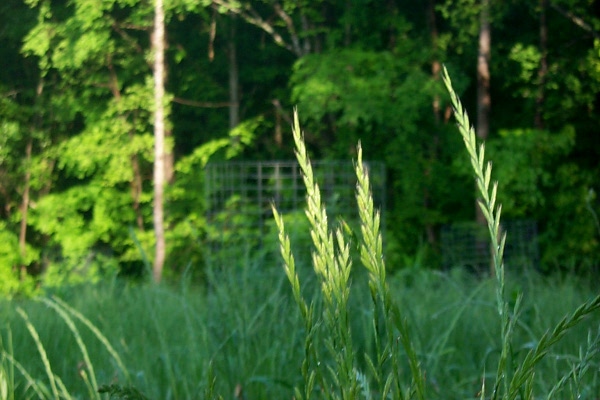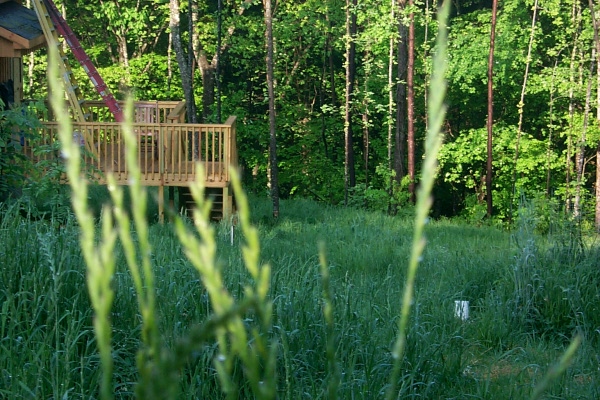

Of all the billions and billions of pages on lawn care to be found on the Internet, it is exasperatingly difficult to find information on the practical and biological consequences, pro and con, for letting grass go to seed. Apparently there is a small school of thought that it’s beneficial to let grass go to seed once before mowing it for the first time. I have no idea what the reasoning for this is. And then one comes across lawn “experts” who deliver severe scoldings to anyone who would consider letting their grass go to seed before mowing it. One of these experts did at least make reference to some rational reasons — is the grass a hybrid and will the seeds be “true,” how the grass deploys its energy to different parts of the plant, etc., etc.
I have seeded my acre of sun again and again since the pine trees were taken down in March of 2008. I’ve used a lot of Kentucky-31 tall fescue, simply because this is the cheapest grass seed, it’s available everywhere, and it’s well adapted to this area. But I’ve also made an effort to work in other types of more expensive fescues, with the hope that whichever type of grass was best suited to a particular area would dominate in that area.
Is Kentucky-31 a hybrid? It’s amazing how hard it is to find that information, but my guess is that it is not a hybrid and that the seed it produces will be true Kentucky-31. But what about the other fescues I planted? Were they hybrids? Who knows.
In any case, what if I do have some hybrids, and their seed yields poor quality grass? I think the answer is, who cares? Because the grass from better seed will dominate over time.
One of the arguments for gardening with heirloom vegetable seed is that, over time, as one selects the best specimens of vegetables for seed-saving, your vegetables adapt themselves to your garden.
I can’t think of any reason why the same should not be true for grass. If one starts with a mix of fescues and lets it go to seed again and again, then eventually one’s grass will adapt itself to the land on which it’s growing.
After all, that’s the story of how Kentucky-31 — festuca arundinacea — was discovered in the first place. A professor of agronomy from the University of Kentucky had heard of a “miracle grass” growing on a hillside in Menifee County, Kentucky. This miracle grass was thriving during a drought. That was 1931, hence the name Kentucky-31.
Horrors. Someone let some grass go to seed on a hillside. And it adapted. What lazy lawnmower-hating slacker let that happen?
I guess I’ll just have to run my own experiments with letting grass go to seed. Yes, it starts to fall over when it gets tall. But, growing at the base of the clump of tall stems there always is a clump of new, short stems ready to take their place.
I have lots of questions. How does tall grass handle dry weather? Does tall grass require net more or net less water? I suspect tall grass may conserve water, because it shades the soil, and mowing grass apparently makes grass very thirsty until it recovers from the mowing. Will tall grass smother out clover and wildflowers? Maybe that’s why so many wildflowers have tall stems. I’ll report on my experiments periodically.
One thing though, is already very clear, and it’s in accord with what the “lawn experts” say. I was unable to establish grass in the spring of 2008. The grass was not able to develop a root system before the summer heat scorched it. The only stuff I had growing in the summer of 2008 were the hardy, native species that volunteered. However, the grass I planted in September of 2008 took off like crazy. It now has thick, deep roots. So it certainly seems to be true that, when starting fescue from seed, you get much better results in the fall.
See the follow-up to this post from eight years later: On letting grass go to see (follow-up)

